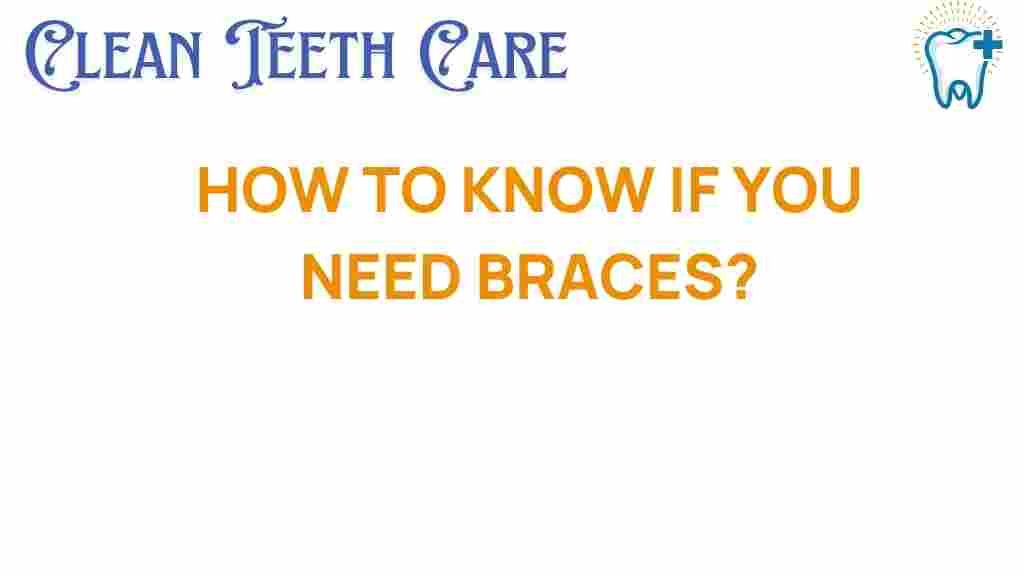Unveiling the Signs: Do You Really Need Braces?
In the world of orthodontics, the question of whether to get braces often comes down to identifying certain signs and symptoms related to your dental health. Braces are not only a cosmetic enhancement but play a crucial role in correcting misalignment of teeth that can lead to more serious dental issues. This article aims to guide you through the signs that indicate the need for braces, the various treatment options available, and tips for maintaining optimal oral hygiene.
The Importance of Dental Health
Your smile is one of your most valuable assets, and maintaining good dental health is essential for overall well-being. Misaligned teeth can affect not just your appearance but also your ability to chew and speak properly. Moreover, improper alignment can lead to issues such as:
- Tooth decay
- Gum disease
- Jaw pain
- Difficulty in maintaining oral hygiene
Understanding the signs that suggest you might need braces can help you take proactive steps toward a healthier smile.
Signs You Might Need Braces
Here are some common indicators that braces may be necessary:
- Overcrowded Teeth: If your teeth appear cramped or overlapping, braces can help create space.
- Gaps Between Teeth: Large gaps can indicate a misalignment that braces can correct.
- Overbite or Underbite: If your upper teeth significantly overlap your lower teeth (overbite) or vice versa (underbite), braces can align them properly.
- Crossbite: This occurs when some of your upper teeth sit inside your lower teeth when biting down, which can lead to wear and tear.
- Difficulty Chewing: Misaligned teeth can hinder effective chewing, making meals less enjoyable.
- Speech Issues: Some people find that misalignment can affect their speech. Braces can help improve this.
Types of Braces: Treatment Options
When it comes to treatment options, braces are not one-size-fits-all. Here are some popular types:
- Metal Braces: These are the traditional braces made of high-grade stainless steel. They are effective and often the most affordable option.
- Ceramic Braces: These are similar to metal braces but are made of clear materials, making them less noticeable.
- Lingual Braces: Placed on the back of the teeth, these braces are hidden from view, offering a discreet option.
- Invisalign: This is a popular treatment for adults and teens who prefer a clear aligner system that is removable and less noticeable.
Choosing the right type of braces depends on your specific needs, budget, and lifestyle. Consulting with an orthodontist can help you make an informed decision.
Kids’ Dental Care: When to Start?
In terms of kids’ dental care, it’s essential to monitor dental development closely. The American Association of Orthodontists recommends that children have their first orthodontic evaluation by age 7. Early intervention may prevent more severe alignment issues later on. Signs that a child might need braces include:
- Early or late loss of baby teeth
- Difficulty chewing or biting
- Protruding teeth
- Frequent biting of the inner cheek
Early assessment allows for timely treatment, which can save time and money in the long run.
Enhancing Your Smile
Braces are primarily known for their ability to enhance your smile. A well-aligned smile can boost self-esteem and confidence. The process may take time, but the end result is worth the patience. Here are a few benefits of braces:
- Improved appearance
- Better oral function
- Enhanced self-esteem
- Lower risk of dental problems in the future
Maintaining Oral Hygiene with Braces
Proper oral hygiene is crucial when you have braces. Here are some essential tips to keep your teeth and braces clean:
- Brush your teeth after every meal, focusing on the brackets and wires.
- Use an interdental brush to clean between the brackets and wires.
- Floss regularly using a floss threader or orthodontic flossers.
- Rinse with a fluoride mouthwash to strengthen teeth and prevent cavities.
Maintaining good oral hygiene will not only help in the efficiency of the treatment but will also keep your teeth healthy throughout the process.
Troubleshooting Common Issues
While wearing braces, you might encounter some common challenges. Here’s how to troubleshoot them:
- Discomfort: It’s normal to feel discomfort after getting braces or adjustments. Over-the-counter pain relievers can help.
- Broken Brackets or Wires: If a bracket comes loose or a wire pokes your gums, contact your orthodontist for a quick fix.
- Food Stuck in Braces: Use a soft toothbrush or dental floss to remove trapped food particles.
Being proactive in addressing these issues can make your orthodontic journey smoother.
Conclusion
Deciding whether you need braces is an important step toward achieving a healthier smile. By recognizing the signs of misalignment and understanding your treatment options, you can make informed decisions that positively impact your dental health. Whether you’re considering braces for yourself or for your child, remember that early intervention can lead to better outcomes. Consult an experienced orthodontist to explore your options and start your journey toward smile enhancement today.
For more information about dental care and orthodontics, consider visiting this resource for detailed insights. Also, check out this guide for tips on maintaining oral hygiene during orthodontic treatment.
This article is in the category Treatments and created by CleanTeethCare Team
